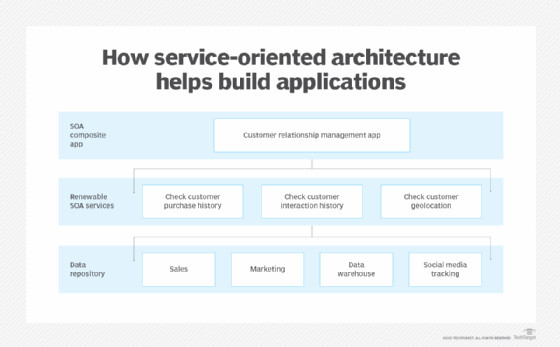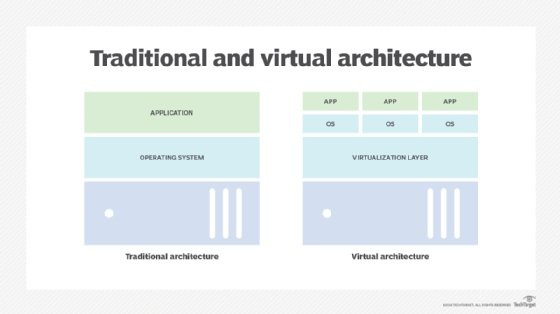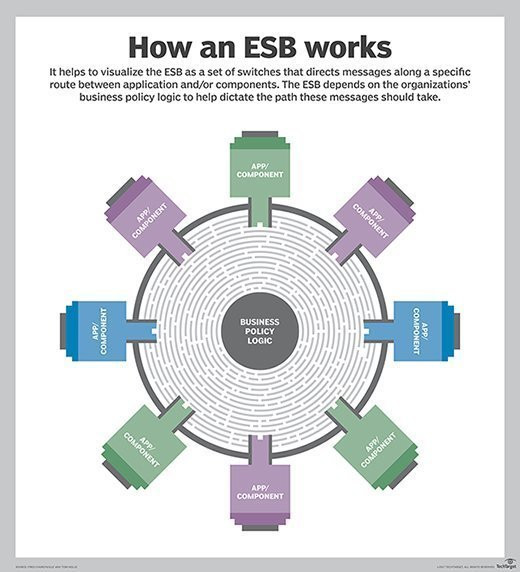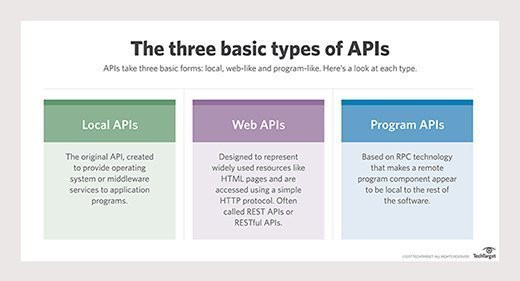Soa Technology is a revolutionary approach to IT that transforms complex systems into agile, reusable services, and pioneer-technology.com is here to guide you through it. By understanding SOA, you can unlock unprecedented levels of interoperability, scalability, and efficiency for your business. Dive into the world of service-oriented architecture, its applications, and its benefits, and discover how it compares to modern architectures like microservices and SaaS with pioneer-technology.com.
1. Understanding SOA Technology: What Is It?
SOA technology, or Service-Oriented Architecture, is a software design paradigm where application components are designed as services. These services communicate over a network, typically via standardized protocols, making them reusable and interoperable across different platforms and languages.
Delving Deeper:
SOA is like building with LEGO bricks. Each brick (service) has a specific function (e.g., processing payments, managing customer data) and can connect to other bricks to form larger, more complex structures (applications). This modular approach offers several advantages:
- Reusability: Services can be reused across multiple applications, saving time and resources.
- Interoperability: Services can communicate regardless of the underlying technology, promoting seamless integration.
- Flexibility: Applications can be easily modified and updated by changing individual services without affecting the entire system.
2. How Does SOA Technology Function?
SOA technology operates by breaking down complex software systems into smaller, independent services that can be accessed by other applications. These services communicate through well-defined interfaces, allowing for loose coupling and greater flexibility.
The Mechanism Behind SOA:
Here’s a step-by-step breakdown of how SOA functions:
- Service Request: A service consumer (e.g., an application or another service) sends a request to a service provider.
- Service Discovery: The service registry helps locate the appropriate service based on the request.
- Service Invocation: The service provider executes the requested task.
- Response: The service provider sends the result back to the service consumer.
 Diagram of how SOA works graphic
Diagram of how SOA works graphic
SOA helps enterprises build apps by making services reusable.
3. Core Components of SOA Technology
SOA technology comprises several key components that work together to enable service-oriented interactions. These components include the service provider, service consumer, service registry, and the service itself.
The Four Pillars of SOA:
- Service Provider: The entity that creates and maintains the service. Service providers can be internal teams or third-party vendors.
- Service Consumer: The entity that requests and uses the service. This could be an application, another service, or an end-user.
- Service Registry: A directory that lists available services and their interfaces. It acts as a central repository for service discovery.
- Service: The self-contained unit of functionality that performs a specific task. Services have well-defined interfaces and are loosely coupled to other services.
4. What Are the Primary Goals of SOA Technology?
The primary goals of SOA technology revolve around enhancing agility, reusability, and interoperability in software systems. By structuring procedures as services, SOA aims to create a more flexible and efficient IT environment.
Three Key Objectives:
- Service Orientation: Structuring software components as independent, reusable services.
- Service Publication: Providing a mechanism for publishing available services, including their functionality and requirements.
- Security and Governance: Controlling the use of services to ensure security and prevent governance issues.
5. The Historical Evolution of SOA Technology
The emergence of SOA technology was driven by the need for a more flexible and interoperable approach to software development. It evolved from earlier models like Remote Procedure Call (RPC) to address the challenges of integrating distributed systems.
From RPC to SOA:
- RPC (Remote Procedure Call): An early approach that allowed one software process to invoke another as if it were local. However, RPC lacked standardization and security features.
- SOA (Service-Oriented Architecture): Introduced the concept of loosely coupled services with standardized interfaces, addressing the limitations of RPC.
- Microservices: The latest evolution, focusing on small, independent services accessed through REST interfaces, offering even greater agility and scalability.
 Traditional vs. virtual architectures.
Traditional vs. virtual architectures.
While part of traditional architecture, SOAs introduced principles used by virtual architectures as well.
6. Enterprise Service Bus (ESB): What Role Does It Play in SOA?
An Enterprise Service Bus (ESB) is an architectural pattern commonly used to implement SOA. It provides a centralized platform for integrating different applications and services, handling tasks such as data transformation, routing, and protocol conversion.
ESB as the Backbone of SOA:
ESBs act as a central communication hub, facilitating interactions between services. They offer several key features:
- Message Routing: Directing messages between applications based on predefined rules.
- Data Transformation: Converting data formats to ensure compatibility between services.
- Protocol Conversion: Translating communication protocols to enable seamless integration.
- Service Orchestration: Coordinating multiple services to perform complex tasks.
 Diagram showing how ESBs work
Diagram showing how ESBs work
An enterprise services bus directs messages between applications and components based on an organization’s business policy.
7. Implementing SOA Technology: Key Strategies
Implementing SOA technology involves several key strategies, including choosing the right protocols, designing loosely coupled services, and ensuring proper security and governance.
Best Practices for SOA Implementation:
- Choose Standardized Protocols: Use widely accepted protocols like SOAP and REST for service communication.
- Design Loosely Coupled Services: Ensure services are independent and can be modified without affecting other services.
- Implement Robust Security: Secure services using authentication, authorization, and encryption.
- Establish Governance Policies: Define clear policies for service management, versioning, and monitoring.
8. Real-World Applications of SOA Technology
SOA technology finds applications in various industries, from military and healthcare to mobile apps and museums. Its ability to integrate disparate systems and promote reusability makes it a valuable asset.
SOA in Action:
| Industry | Application |
|---|---|
| Military | Deploying situational awareness systems to improve coordination and decision-making. |
| Healthcare | Improving healthcare delivery by integrating patient data across different systems. |
| Mobile Apps | Accessing device features like GPS to provide location-based services. |
| Museums | Creating virtualized storage systems for managing and accessing information and content. |
9. What Are the Key Advantages of SOA Technology?
SOA technology offers several key advantages, including standardization, reusability, ease of maintenance, interoperability, high availability, increased reliability, and scalability.
The Benefits of SOA:
- Standardization: Ensures consistent and secure automation of business processes.
- Reusability: Reduces development costs by allowing services to be reused across multiple applications.
- Ease of Maintenance: Simplifies updates and modifications as services are independent.
- Interoperability: Enables seamless data transmission between different platforms.
- High Availability: Provides services on demand, ensuring continuous access.
- Increased Reliability: Improves application reliability through easier debugging of smaller services.
- Scalability: Allows services to run on different servers, enhancing scalability.
10. What Are the Limitations of SOA Technology?
Despite its advantages, SOA technology also has limitations, including complexity, high initial investment, complicated service management, and potential performance issues due to validation processes.
Challenges of SOA:
- Complexity: The web services model can be complex and difficult to implement.
- High Initial Investment: Implementing SOA requires a significant upfront investment.
- Complicated Service Management: Managing a large number of services and their interactions can be challenging.
- Performance Issues: Validating service inputs can decrease performance and increase response times.
- Scalability Limitations: Coordinating services with shared resources can limit scalability.
- Single Point of Failure: ESBs can create a single point of failure, disrupting communication between services.
 Descriptions of the three types of APIs
Descriptions of the three types of APIs
There are three basic types of APIs, including local, web and program APIs.
11. Web Services and WSDL: What Are They in SOA?
Web services and Web Services Description Language (WSDL) are fundamental models in SOA for implementing and describing services. They provide a standardized way for applications to communicate over a network.
The Role of Web Services and WSDL:
- Web Services: Software components that communicate via standardized protocols, typically HTTP, SOAP, and XML.
- WSDL (Web Services Description Language): An XML-based language used to describe the interfaces and functionalities of web services.
12. SOA vs. Microservices: Key Differences
SOA and microservices are both architectural styles, but they differ in several key aspects. SOA focuses on integrating enterprise-level applications, while microservices emphasize small, independent services.
Comparing SOA and Microservices:
| Feature | SOA | Microservices |
|---|---|---|
| Scope | Enterprise-level applications | Small, independent services |
| Granularity | Coarse-grained services | Fine-grained services |
| Communication | ESB, SOAP | RESTful APIs |
| Independence | Loosely coupled, but often dependent | Highly independent |
| Governance | Centralized | Decentralized |
| Scalability | Limited by ESB | Highly scalable |
13. SOA vs. SaaS: Key Differences
SOA and Software as a Service (SaaS) are related but distinct concepts. SOA is an architectural style for building applications, while SaaS is a delivery model for providing software over the internet.
Understanding SOA and SaaS:
- SOA (Service-Oriented Architecture): A design paradigm focused on creating reusable services.
- SaaS (Software as a Service): A cloud computing model where applications are delivered over the internet as a service.
Key Differences:
- Purpose: SOA is about how applications are built; SaaS is about how they are delivered.
- Scope: SOA focuses on internal integration; SaaS focuses on providing software to end-users.
- Delivery: SOA involves building services; SaaS involves delivering ready-to-use applications.
SaaS can be seen as an application of SOA principles in the cloud, where complete business processes are supported as services. These services often provide APIs for integration with other systems, adhering to modern microservice and API conventions rather than traditional SOA approaches.
 Descriptions of the three types of APIs
Descriptions of the three types of APIs
FAQ: SOA Technology
1. What is the primary benefit of SOA technology?
The primary benefit is enhanced reusability of services, which reduces development costs and time.
2. How does SOA technology improve interoperability?
SOA uses standardized communication protocols, allowing services to interact regardless of the underlying platform or language.
3. What is an Enterprise Service Bus (ESB) in SOA?
An ESB is an architectural pattern that facilitates integration between applications by handling data transformation, routing, and protocol conversion.
4. What are the key components of SOA technology?
The key components include the service provider, service consumer, service registry, and the service itself.
5. How does SOA technology ensure security?
SOA relies on the security of individual components, identity and authentication procedures, and secure connections between components.
6. What is the main limitation of SOA technology?
One main limitation is the complexity of implementing and managing SOA, which can lead to high initial investment and complicated service management.
7. How do web services relate to SOA technology?
Web services are a common implementation of SOA, using protocols like SOAP and WSDL to enable communication between services.
8. What is the difference between SOA and microservices?
SOA is an architectural style for integrating enterprise-level applications, while microservices emphasize small, independent services accessed through RESTful APIs.
9. How does SaaS differ from SOA technology?
SaaS is a delivery model for providing software over the internet, whereas SOA is an architectural style for building applications.
10. In what industries is SOA technology commonly used?
SOA is used in various industries, including military, healthcare, mobile apps, and museums, to integrate systems and promote reusability.
SOA technology offers a robust framework for building flexible, interoperable, and reusable software systems, and pioneer-technology.com is your premier resource for navigating this complex landscape. Whether you’re looking to understand the basics, explore its applications, or compare it with other modern architectures, pioneer-technology.com provides the insights and analysis you need to stay ahead.
Ready to dive deeper into the world of SOA technology and discover how it can transform your IT infrastructure? Visit pioneer-technology.com today and explore our extensive library of articles, case studies, and expert opinions. Stay updated with the latest trends and innovations in SOA and other pioneering technologies, and unlock the full potential of your business with pioneer-technology.com. Our address is 450 Serra Mall, Stanford, CA 94305, United States, and our phone number is +1 (650) 723-2300.

